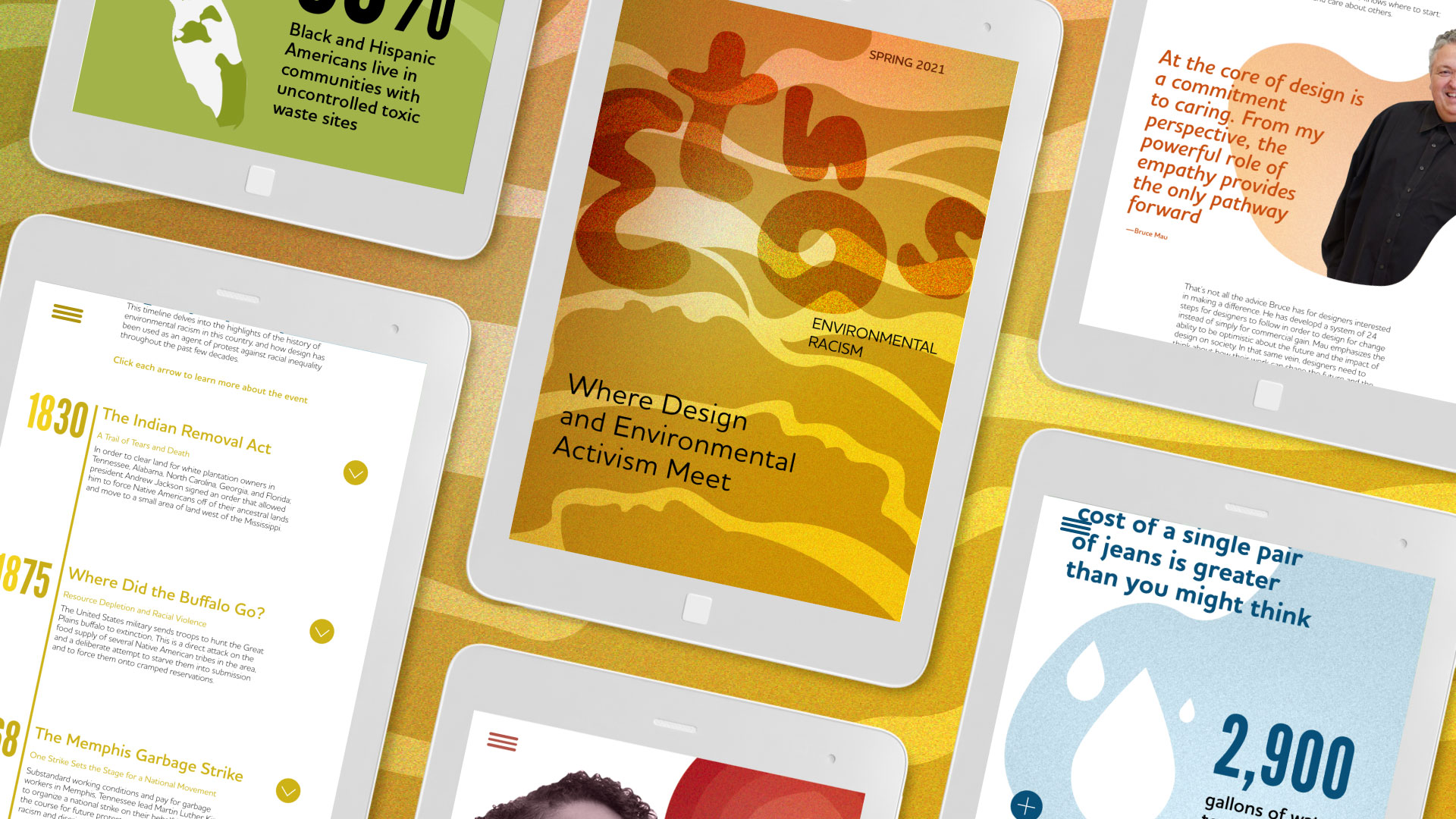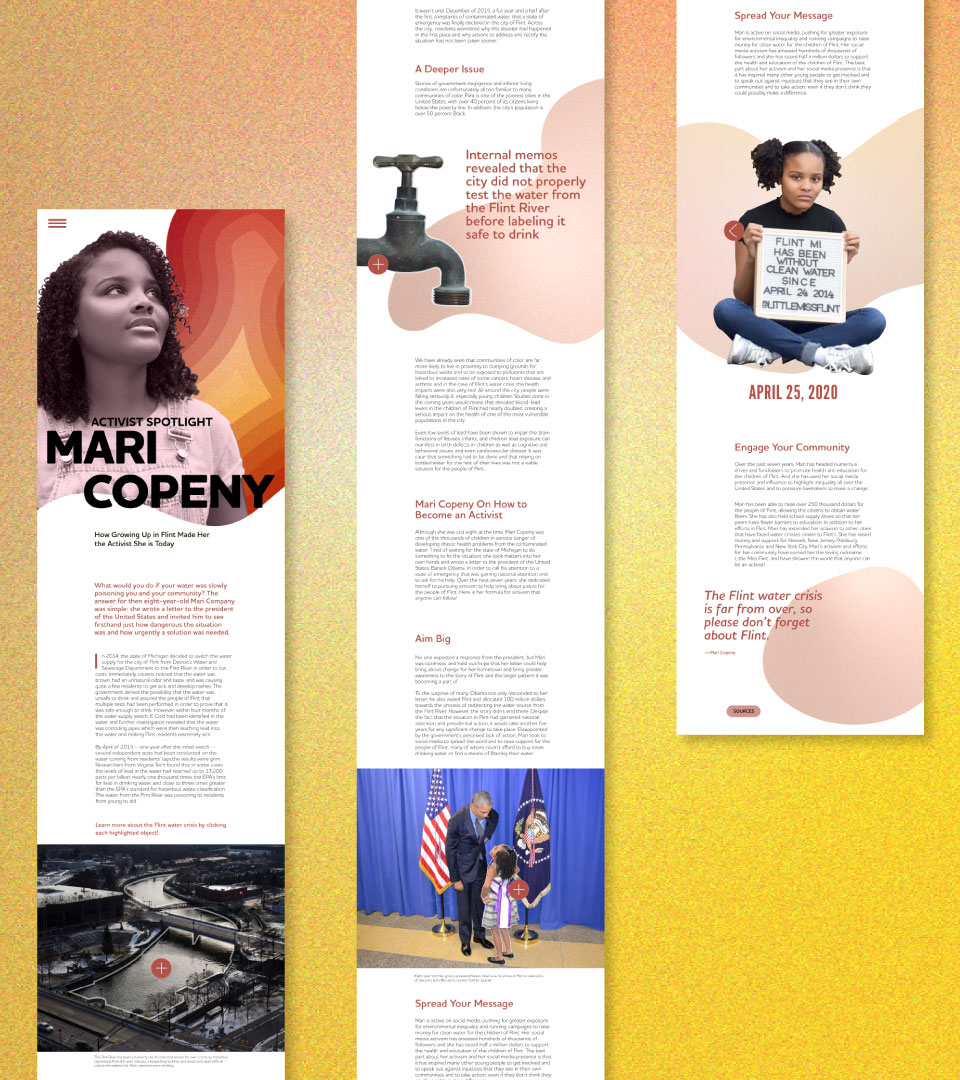
Kristen Adams

Abstract
One of the main reasons many people don’t engage more with environmentalism is because the subject matter and scientific language is often difficult to understand, the weight of environmental issues can be emotionally exhausting, and it can be difficult to know what information to trust since so many brands and publications have turned environmentalism into a trend in order to appear sustainable and ethical even though in practice many of them are not.
There is a need for clear and authentic environmental messaging that allows people to learn about environmental issues and understand how to engage in activism. The purpose of Ethos is to inform audiences through engaging digital mediums and to inspire a desire and confidence to pursue activism.

Thesis Advisors
Earl Gee: SJSU Graphic Design Professor
Diane Lee: SJSU Graphic Design Professor
Leigh Pond: Environmental Scientist & Content Designer for Botanical Interests
Research Questions
1. What is the role of graphic design in activism?
2. How can graphic design promote authentic sustainability and environmental activism?
3. In what ways can digital mediums uniquely reach audiences?


Outcome
The final outcome of this project is a digital publication that utilizes different digital mediums to educate readers about important environmental issues—the first issue covers the topic of environmental racism—and to inspire participation in environmental activism. Interactive elements, motion, and video are all utilized in this publication to help the audience absorb and understand the information in interesting and different ways. The publication consists of five articles, each covering a different topic or angle of environmental racism and providing another piece of a larger story. The aim of this publication is to have readers leave with a deeper understanding of the environmental issues presented and to feel informed and empowered to do something to help bring about change. This publication series has endless possibilities for future environmental topics and new methods of delivery, this means that it can be infinitely built upon and adapted. As much as this project was an exploration of sharing information in new and innovative ways digitally, it was also an exercise in using my voice as a designer to spread awareness and contribute to design activism in my own way.